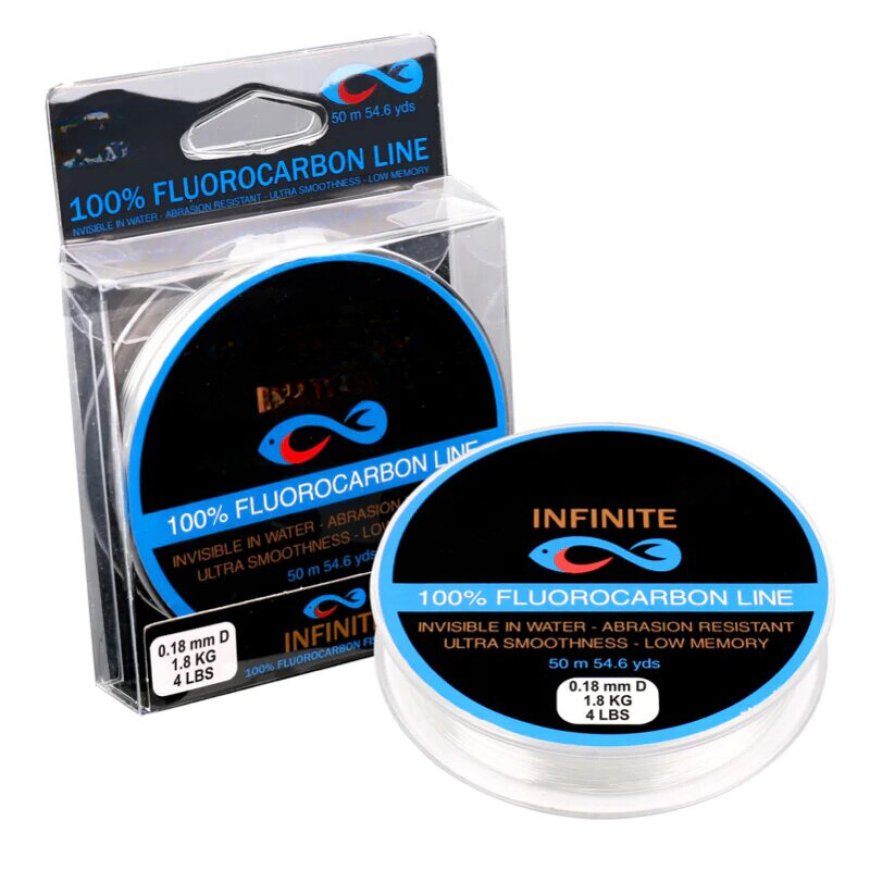Different Types of Fishing Lines: Complete Guide
Fishing has become a highly specialized activity with advanced technology, allowing fishermen to be more picky in their setup selection. Monofilament is reliable, durable, and forgiving, but can cause loops, knocks, and twists. Copolymer allows for new line signatures but stretches less than monofilament but has less memory. Braided lines are strong and sensitive, but can be tough and tie in a waste ball. Fluorocarbon is similar to monofilament but has a hard shell and is stiffer. It falls faster than monofilament but is not ideal for topwater lures and can be difficult to tie knots. Regular line changes are essential for achieving the best results and conditions in the sport.

With abundant high-tech fishing equipment, fishing has become a highly specialised activity. The advent of cutting-edge technology in sportfishing has allowed fishermen to become increasingly picky in their setup selection. It seems scary and hard, but picking the correct fishing line shouldn't require a physics or engineering degree. When you've mastered the fundamentals of line design, you'll be able to confidently choose the perfect line.
Monofilament
Monofilament is reliable. It expands under pressure and is durable and forgiving. Most global fish landings are on monofilament. Monos can be elastic yet still drive hooks deep into fish. Monofilament is softer and more forgiving than fluorocarbon. It helps with rock, fish teeth, and other abrasions. Mono is the go-to line for most fishing methods to support fishing rods.
Mono is softer and more flexible than fluorocarbon, making knots tie simpler. You can cut the line with nearly anything, including your teeth. Monofilament excels for lines under 12 pounds. It casts lighter lures and works with snaps, hooks, sinkers, bobbers, and swivels.
The stretchiest line is monofilament. Anglers can benefit or suffer from it. Due to its lower sensitivity than fluorocarbon, some anglers may lose fish due to light impacts. Stretch requires the fisherman to put the fishhook harder to penetrate the fish's mouth.
The memory of monofilament fishing lines causes loops, knocks, and twists, causing casting problems. Trolling lures that twirl the line make monofilament tricky. Not employing leaders and swivels to reduce line twists causes twisting.
Copolymer
Why do you see so many fishing lines at the store? The copolymer is responsible for allowing new line signatures to be introduced easily. Manufacturers can replicate existing lines and make minor tweaks to pretend they are better and different. It stretches less than monofilament but has less memory. Shock strength, casting, and knot strength remain. It increases line stability and abrasion resistance.
One thing that makes monofilament different from copolymer is that it also doesn't float. Even though it is still made of nylon, the core of the monofilament can still get hot, and UV rays can damage it. The angler is the big loser because all the changes in technology made to monofilament to make copolymers have made the price go up a lot. You need to choose if the difference is worth it to you.
Read More…
https://www.blogbursts.in/why-unhooking-fishing-mats-are-essential-for-carp-fishing/
Braided
The braid's best feature is its strength. The second is its width, especially for big ones like 15, 30, 50, and 80 pounds. When tested with very little weight, say less than 10 pounds, it is very sensitive and still very strong. Most people use it because it has the best casting reach of all its competitors. Adding a monofilament or fluorocarbon leader gives you an amazing edge over the fish.
Though more expensive than monofilament, copolymer, and fluorocarbon, it can be tough and tied in a waste ball, even with wind knots. Knotting can be difficult since the braid slips if the knot is wrong. Many classic monofilament knots, such as the Clinch Knot and Blood Knot, fail with braided lines. Not bad until you don't have them. Retying braids takes clippers or scissors.
Fluorocarbon
It looks and feels a lot like monofilament because it is round and has a similar shape. Light can pass through it, so it's almost invisible and very clear under the sea. For this reason, anglers can use fluorocarbon in tests with more weight than monofilament and copolymer lines, which are easier to see. Even though fluorocarbon can stretch, it doesn't have as much give as monofilament. It also feels more flexible than a braided line. It has a hard shell, which makes it stiffer and less likely to break. The Fluorocarbon line is the stiffest of all the types, and it really is.
Fluorocarbon falls faster than monofilament because it is denser. That means it's not the best line for topwater lures. The bigger complaint from weekend anglers is that it's hard to tie knots because the rope is so thick. When tying with fluorocarbon, it is very important to wet the line so that it slips and the knot gets tighter.
Conclusion
It is common knowledge among anglers that they need to change their fishing line on a regular basis. However, the majority of people only do so when something reminds them of this fact. The way you fish and the results you get will be different depending on which one you choose based on the conditions and the species.
